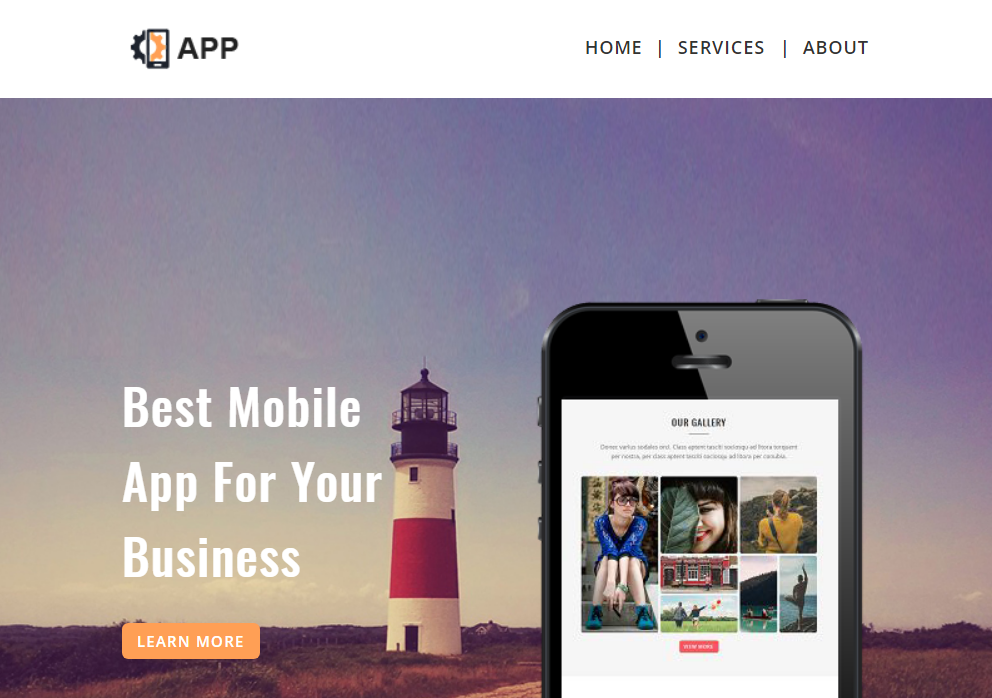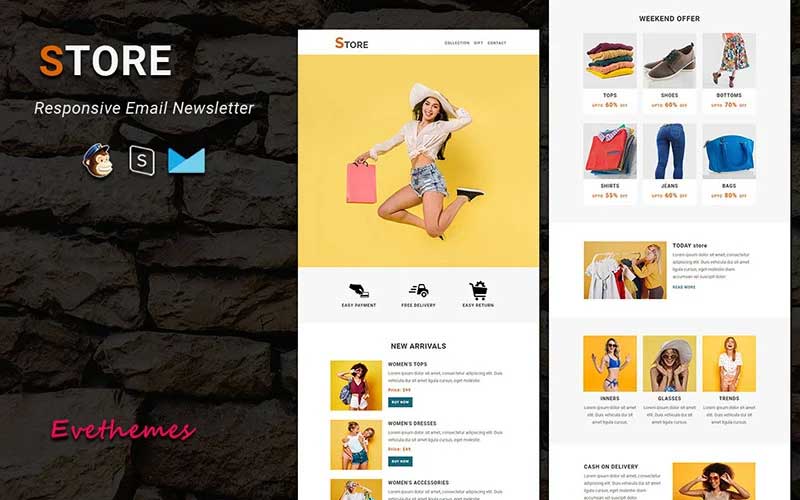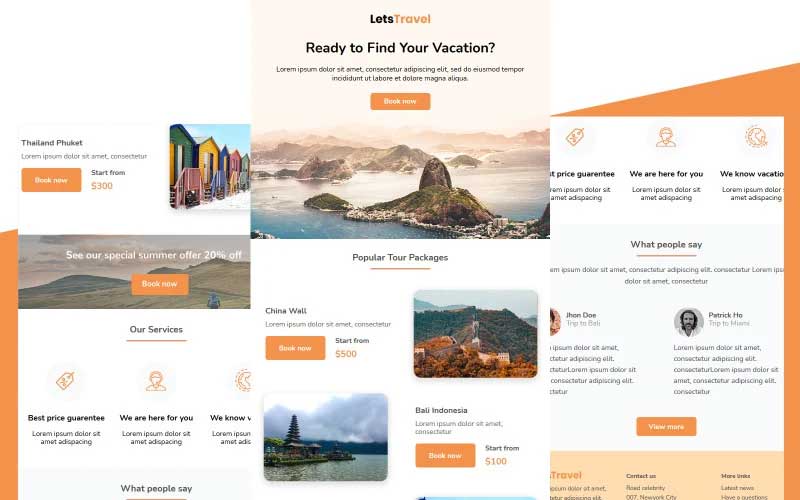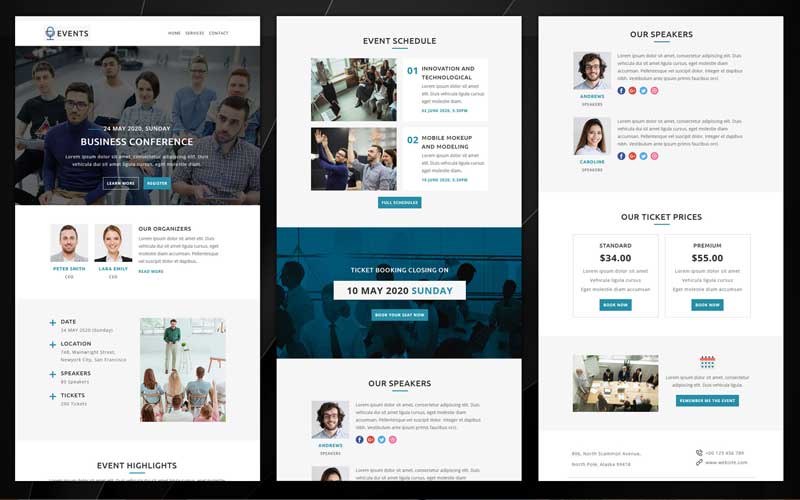How to Write an Effective Follow-Up Email After No Response
- Intro to a follow-up e-mail
- Cases when it is appropriate to send an e-mail follow-up
- Time-frames on following up
- The key principles of follow-up letters
- How to write an effective follow-up e-mail
- Follow-up e-mail subject lines
- Follow up email templates
- Common mistakes
- Conclusion
Intro to a follow-up email after no response
We all understand that a follow-up email is a sure way to get people's attention, who are drowning in the stream of emails, but when is it appropriate to send such an e-mail, how to write a follow-up email after no response, and what free or premium email newsletter templates will help you create an effective email? Let’s dig deeper.
E-mail is a convenient and reliable way to disseminate information. E-mail has become an important way of exchanging messages and files between coworkers, students, teachers, friends, and family. The primary goal of an e-mail is to receive a response from an addressee.
Follow-up means maintaining contacts with potential clients. For example, it may be a follow-up email after a meeting, or a repeated email to a customer who has not responded to an initial offer. The purpose of such a call or letter is to remind the client about yourself, clarify the situation, and get feedback.
If you have ever sent an email to your friend and have not received a reply, you will probably think twice before sending him another message. You do not want to bother him, right?
Companies face the same dilemma but on a different scale. The researchers found that 81 % of sales are made after the fifth contact with a potential client. From the first time, it is possible to sell only in two percent of cases. People buy when they are ready to buy, not when you are ready to sell. This means that you should contact them when this need arises. In other words, you have to send a follow-up e-mail.
Cases when it is appropriate to send an e-mail follow-up
Let’s discuss some cases when it is appropriate to follow up. There are many more examples, here are a few of them.
- Job interview. After your CV is sent, this is a good idea to send a follow-up e-mail with the further explanation of your skills and qualifications. Once your job interview is finished, you can send a follow-up e-mail that thanks the recruitment team for their time. If you have not heard back from a recruiter, another e-mail follow-up should be sent to the employer. In case you did not get a job offer, but you want to stay in touch with the company, you can send another follow-up e-mail letting them know you are still interested in future vacancies.
- Sale. We all know that follow-up is a critical component in making a deal. The easiest way to miss a sale is to forget to contact a client again.
- Meeting request. Make sure you send a follow-up e-mail if you have not received any response to your meeting request.
- Work-related communication. Being a team member, do not hesitate to send a follow-up e-mail to your colleagues or boss to have an effective communication.
- “Nice to meet you” e-mail. Sometimes it is a good idea to send a «Nice to meet you» follow-up e-mail after a conversation at a conference or event. This is effective and polite when you want to be in contact with the person you just met.
Why do we follow up?
- It is polite.
- Follow-up e-mail shows you care.
- Clients stick to your business.
- It is a great chance to ask our clients, colleagues, partners, friends, etc. about their expectations, to achieve our primary goal.
Follow-up e-mail helps:
- To reach out to an addressee. Marketing Donut claim that you need about five contacts with potential customers before they agree to your offer.
- To increase an average check. Make each purchase not a dot, but a dot-dot-dot in communication with a client. Offer him additional products or services, and you will sell more.
- Reactivate an addressee. To attract a new customer is five times more expensive than keeping an old one. Those who are already with you, faster agree to spend more.
- To build the trust. Regular follow-ups show you care about your addressee. And the more loyal and involved he is, the more likely he is to continue your business communication.
Time-frames on following up
How long should you wait before following up? There are a lot of different factors and circumstances this depends on.
Let’s check some examples.
- Thank you follow up email. “Thank you” e-mail after a job interview, and any other event is usually sent within 24-48 hours.
- Job application. If you keep sending your CV, but there is no response, send a follow-up e-mail in a couple of days after to make sure your application is received and ask if any additional information is required.
- Work-related correspondence. If your colleague is in, but you are not getting any response within 24-48 hours, feel free to send a follow-up e-mail.
- Networking. It is recommended to catch up with a connection every three months.
- Sales area. It is essential to follow up on your leads (sales follow up email). Hot leads require more frequent following up, while other types of leads shouldn’t be forgotten about also.
The key principles of follow-up letters
Follow-up frequency
Imagine you had a great date, but the partner disappeared and called back after three months only. Would you agree to meet him/her again? Remember, consistency is vital for following up.
To determine the frequency of sending follow-up e-mails, analyze the behavior of the audience. Suppose you sell an expensive service and a person needs time to decide. Then, you postpone following up to 1-2 months.
For example, Netflix sends about six follow-up e-mails during their free subscription (1 month), encouraging customers to pay for the subscription after the trial period.
Effectiveness and importance
The task of any follow-up is to maintain the interest of a potential client and not to let him go. Share with people what is important and useful for them. Then they are more likely to become your loyal customers.
Call to action
Each letter should end with a clear call to action. Imagine that you convinced a person to become your client, but you did not specify how to proceed further. Do you think he will find this out himself? No, he will forget about you.
To get a response to your follow-up e-mail, explain to the user what to do and what benefit he will receive.
The perfect call to action:
- attracts attention;
- is clear and transparent;
- induces action;
- does not require additional effort.
How to write an effective follow-up e-mail
So, you have already decided whom and how often to send a chain of letters, what to talk about and how to motivate. It is time to write the text.
Here are some tips on how to write a follow-up email (follow up or follow-up) and make it effective and professional. So, your follow-up e-mail should be:
- not too long, but informative and to the point;
- error-free;
- polite.
First, define the goal of your e-mail. It might be a ‘Thank you’ e-mail, or you might need some information or want to catch up.
Pay attention to a follow-up email subject line. Do not use some vague subject lines, like “Just checking-in” or “Important to read.” A better option is “Programming department meeting, April 30th”.
Emphasize your initial interaction to remind your addressee about your last meeting or talk. E.g., “I got excited after I spoke to you at _________.”
Clearly say your follow-up intentions. E.g., “It would be rather interesting to learn more about ______ as I am currently leading similar project at______.”
Personalize your follow up emails. Use the maximum information you know about a potential customer. This is not just about contact details. An effective follow-up is as personalized as possible. This is what distinguishes a follow-up mailing from regular emails for everyone and makes your addressee believe that you are writing to them.
Do not make an addressee feel guilty. If your addressee does not respond to your emails, there is no reason to reproach them. If you make a potential client feel guilty, he may want to stop any cooperation with you.
Simplify. After your follow-up e-mail, the user should clearly understand what you are useful for and what actions you expect from him. To do this, let the message be concise and to the point. Do not write immediately about everything you want to inform the client about – you have a whole chain of letters. And remember - one e-mail - one call to action.
Look at the follow-up sample email below.
Subject: Are you visiting April IT Meeting?
Dear <name>,
We haven't yet received your response as for participation in our annual April IT Meeting. We must know the number of the participants before March 25th. In case you have not received our initial invitation email, this meeting will be held on April 15nd from 7:00 to 9:00 p.m. at <Address>. Our topic is “The Future of IT. “Our speaker is Tom Ford, CEO of <Company>.
See you there!
Sincerely,
Ellie Johnson
President
IT Group
As you can see, the follow-up email example is direct and specific to the point. Short, polite, and professional. Professional signature closes the e-mail.
Follow-up e-mail subject lines
You open an e-mail and see there is an endless list of the new letter received. Some of them arouse your interest. Some of them are sent to spam. Take your time to choose an effective subject line for your e-mail. After all, it depends on it, whether a person reads your message or not.
A professional and effective e-mail subject line is a critical component of an e-mail. An effective follow-up email subject line can get you more opens and positive responses. It is not a secret that people see a subject line of an e-mail first before deciding to open an e-mail.
Provide the piece of the most important information in the subject line. Make sure you specify the key information in the subject of your e-mail. Your addressee should see the reason for your e-mail right in the subject.
If it is appropriate, use your addressee’s or the company’s name. The more personalized your e-mail subject line is, the more chances the e-mail will be opened.
Include a question in the subject line for follow up email in case there is an answer in the body of the e-mail. Asking a question right in the subject line encourages your addressee to open an e-mail and get an answer related to his business.
Make sure a subject line and further text of your e-mail are always connected. This rule is especially important for any follow-up e-mail.
And now, let’s check a couple of examples of the most effective subject lines to increase open rate.
- Identify yourself, company, or product. “Sender’s name/company’s name – Introduction” or “Recipient's name – Introduction”. E.g. “John Luis – Introduction”.
- Sincere compliments in the subject line, e.g., “Wow, Mr. Jonson, you performed great!”
- Use prompt topics and try to be visually different, e.g., “LAST DAY TODAY – Product’s name DISCOUNT”.
Writing a professional subject line is one of the most complicated parts of email marketing, but still, it is half the battle, let’s go further.
Follow up email templates
There is a vast number of follow-up e-mail cases and scenarios. Let’s cover a couple of general follow up email samples - follow up email sample after no response, after a voice message left, after a sales call, etc.
Right after a voice message is left.
Hi Julia,
I just tried to reach you on the phone and left a voice message.
Please contact me back ASAP at xxx-xxx-xxxx.
Thank you!
–
Paul Mitchel,
Sales Manager/<Company>
Add value after a sales call.
Hi Julia,
I enjoyed talking to you earlier today, and I hope our cooperation will improve your company’s efficiency and profitability.
As mentioned, I have attached more information about our top business values and the resources to review to reach your company’s objective.
Please let me know if you have any further questions or concerns, and I will be glad to assist you. If not, I look forward to talking again on [date and time].
Thanks!
__
Paul Mitchel,
Sales Manager/<Company>
Thank you email after meeting at an event
Hi Peter,
It was nice to meet you at <event>. Thank you for the information provided. It was exciting to get to know about <topic of discussion>. I am interested to hear more about <topic you are interested in> and would be glad to meet again in a week. I am free on <date>. Does this date work for you?
Looking forward to keeping in touch!
Thanks!
__
Paul Mitchel
Follow up to your follow up
Hi Linda,
I am writing to you to check which of the five techniques you are currently implementing in your team <details of the information sent in the previous e-mail>. If you need any help or any questions appear, I will be more than happy to help you. Please let me know when you are available for a quick call. I’m looking forward to hearing from you.
Thanks!
__
Paul Mitchel,
Sales Manager/<Company>
Follow up email after no response to 2-3 emails
Hey Tom,
I have not heard back from you for a while. I am just wondering - did I do something wrong?
Last time we spoke, we talked about <topic you discussed>.
If I did something wrong, please let me know ASAP, and I will be glad to fix it.
Thanks!
__
Paul Mitchel,
Sales Manager/<Company>
Follow up after a job interview
Hi Julia,
Thank you so much for your time during the interview. I was excited to learn more about your company and department you are hiring. I would be happy to get a job offer and become a member of your corporate family.
I believe <Company’s name> is the company everyone dreams to work for. It offers professional growth opportunities for staff, friendly environment and gives employees the benefits they value. The opportunity to work with such a reputable organization is exciting, and I am confident I am the candidate you are looking for.
I am attaching my portfolio, which I mentioned during the conversation.
Thank you for your time and consideration. I’m looking forward to hearing from you soon.
Sincerely,
__
Paul Mitchel
A Guide To Building Your First Email List [Free EBook]
Common mistakes
1. You have sent 1-2 emails and stopped.
Usually, people do not want to be annoying. If your follow up did not get the result after a couple of emails, reread this article. Some customers may need about three months and more to decide whether they want to cooperate or not.
2. You do not stimulate the addressee.
You should not just remind yourself, but also push the potential customer to the desired action. A letter with no clear call to action is a waste of time and effort.
3. You chose the wrong subject line.
According to the statistics, the decision of 35% of users to open an email depends on the subject line they see. Avoid standard subject lines, so your email does not look like just another newsletter.
No need to use a long and misleading subject line. Your subject line should clearly show the reason to read your e-mail.
4. You are following up too often.
Make sure you do not follow up multiple times per day, or every day during a week. Let your addressee have some time to read your e-mail and make the decision before contacting him again.
5. Do not continue following up after “NO” response.
If you receive a response with a definite “No,” do not disturb your addressee with further following up. Until you get “No, I am not interested!” to your e-mail, feel free to continue your e-mail correspondence.
6. Sending flash-based letters.
Nowadays most of the people check their incoming emails on the mobile devices. Avoid sending flash-based e-mails, as it takes more time to load the information received, and some users will not wait and close an e-mail.
7. Do not practice mass emailing.
As we all know, it is much better to get a personalized message, than the one with the subject “To whom it may concern”. Make sure to get enough information about your addressee to make a professional and personalized letter.
8. Wrong addressee.
Always check the e-mail address you are sending your follow-up to before clicking ‘Send’. The right content of your follow-up e-mail should be delivered to the right recipient.
9. Excessive emotionality.
Some exclamation marks, smileys with hearts, enthusiastic odes about the company - stop. Your follow-up e-mail should be professional and to the point.
10. Too long e-mail.
The longer the message, the less likely someone will read it.
Do not describe in detail your strategy, plans and everything else. There are more convenient tools, such as Google Docs or other programs.

Conclusion
There is every reason to believe that follow up (follow-up or follow up) e-mails have almost the same effect as the first e-mail since each message has the risk of getting lost among the number of others. Sending a single email, you cannot be sure that the recipient will notice it. So, why do we continue receiving the same advertising messages repeatedly? Because they work. Follow up mailing is a sure way to get people's attention.
Even if you got the right customers and activated them quickly, it critical to keep watching those who are down and invite them to come back, convince them to continue using your program, or make another purchase.
Pay attention to the key principles of writing a follow-up email. The professional email templates listed above are not ideal or universal. You have your own style of writing; you can feel your client better and pick up the most effective words for them.
Now you know how to send a follow-up email after no response. Remind your customers, partners, and colleagues about yourself - be in their sight!
APP - Multipurpose Responsive Newsletter Template
Fino - Responsive Newsletter Template
Store - Responsive Email Newsletter Template
DigitUP – Responsive Email for Agencies, Startups & Creative Teams
LetsTravel - Travel newsletter template multipurpose
Events – Multipurpose Responsive Email Newsletter Template

Read Also
The 10 Best Free Email Service Providers for Your Business [Infographic]
15 Best Promotion Email Templates For Your Business
5 Free Email Marketing Plugins for Your WordPress Blog
Get more to your email
Subscribe to our newsletter and access exclusive content and offers available only to MonsterPost subscribers.








Leave a Reply
You must be logged in to post a comment.